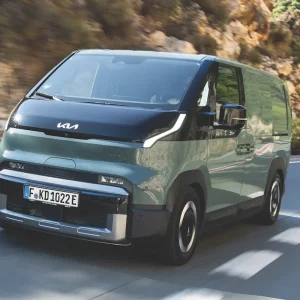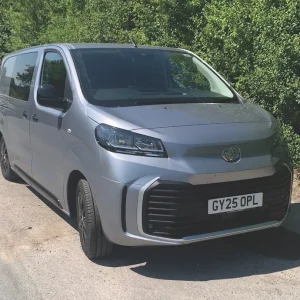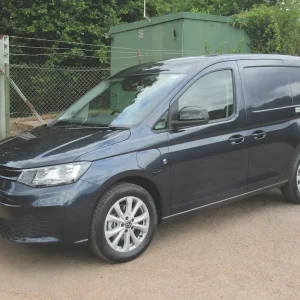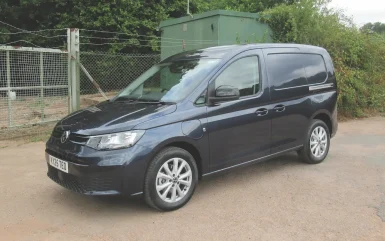
All responsible businesses want to minimise their environmental impact and reduce the emissions from their vehicles. What they don’t want to do, however, is compromise the efficiency of the service they deliver to customers.
Running an electric van is, in many respects, laudable. If you are an emergency response plumber however, and somebody rings in a panic at 2am to tell you that water is cascading through their dining room ceiling, then they are unlikely to be terribly happy if you tell them that they’ve got to wait two hours before you can attend because your van has got to charge up.
Same goes if you are a burglar alarm engineer who is summoned to reset
an alarm that has accidentally triggered in the middle of the night and can’t be switched off.
Maybe the answer is to consider running a plug-in hybrid. You can operate it on battery power if you need to but always have an engine to call on if that is what is required.
OK, it’s not zero-emission all the time, but it is for some of the time, and you are not risking losing clients by providing a less-than-reliable service.
It was with these thoughts in mind that we got to grips with Volkswagen’s front-wheel-drive plug-in Caddy Cargo eHybrid. Fitted with a 1.5-litre TSI 150hp petrol engine married to a six-speed DSG (Direct Shift Gearbox) dual-clutch automated transmission, it comes with a 19.7kWh lithium-ion traction battery which can deliver an electric-only range of just over 73 miles.
Launched on this side of the Channel earlier this year, it’s up for grabs with a choice of three specification levels – entry-level Commerce, mid-range Commerce Plus and top-of-the-range Commerce Pro.
The newcomer is the latest extension to the Caddy Cargo line-up which is also offered with a 2.0-litre TDI diesel engine at 75hp, 102hp or 122hp, or a 1.5-litre non-hybrid TSI petrol engine at 116hp. Note that there is no electric version.
A rebadged version of the current Caddy Cargo is also marketed by Ford under the Transit Connect banner – evidence that the cost of developing new light commercials is so eye-wateringly steep that even major manufacturers can’t always do it on their own.
The Cargo eHybrid is sold in both short-wheelbase (3.1m3 load area) and long-wheelbase (3.7m3) Maxi guise. We opted for the former, in Commerce Pro trim.
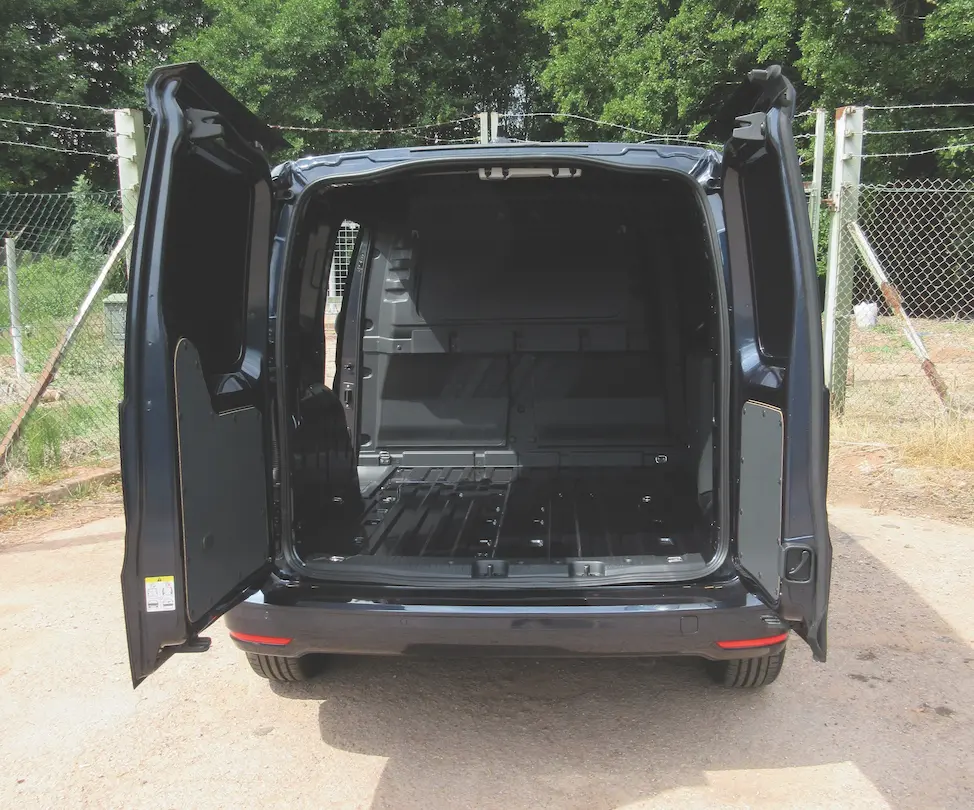
Load bay
A full-height windowless bulkhead divides the cab from the cargo area. Presumably in a bid to save weight it’s plastic, which always makes us nervous. As traditionalists, we prefer a solid steel partition, even if it means a slight reduction in payload.
That said, Volkswagen’s stringent approach to build quality would suggest that the plastic chosen should be able to withstand a good hard wallop or two, so our fears are probably groundless, and six load tie-down points are fitted anyway.
Access to the load box is by means of a sliding nearside door and through twin, asymmetric hinged rear doors, with the narrower of the two on the offside. Press a little yellow button to release the stays and you can swing them through to almost
180°.
Plastic mouldings and ply sheets provide the doors and sides with some limited protection against scratches and scrapes, but there is no protection for the floor, and the entire cargo area really needs timbering out.
At just 635kg, gross payload capacity is modest – something to keep in mind if you need to shift a lot of weight.
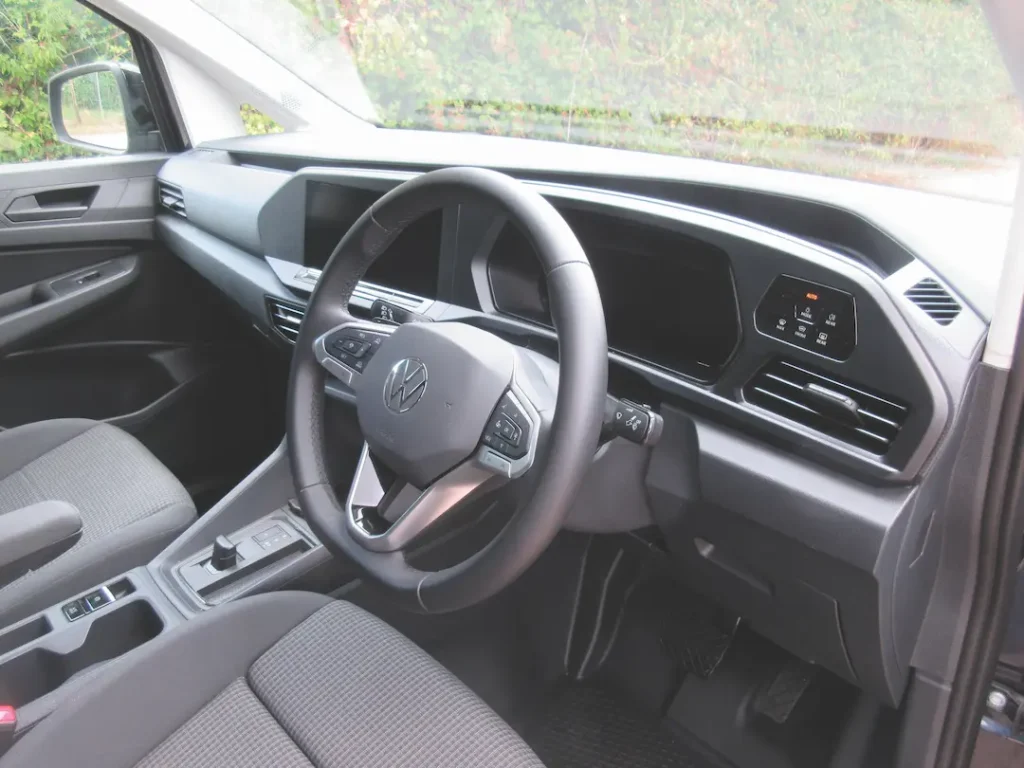
Interior and equipment
A switch between the seats allows you to engage drive, neutral or reverse, and the Cargo eHybrid comes with an electric parking brake with an Auto Hold function, and a keyless push-button starter.
Satellite navigation, Bluetooth connectivity, air-conditioning, heated seats (a favourite feature of ours) and cruise control with a speed limiter are all included in the Commerce Pro deal. So are electric windows, power-adjustable, power-folding and heated exterior mirrors, driver, passenger, side and curtain airbags and a highly effective reversing camera.
A display on the instrument panel shows the electric-only range available and average energy consumption.
You have to resort to the 10.4in infotainment touchscreen to find the traction battery’s charge level, to switch to electric mode only (assuming there is sufficient charge in the battery), and to increase the level of regeneration. This refers to the amount of kinetic energy recovered when you lift your foot off the accelerator pedal that would otherwise be wasted. It is pumped into the battery to extend the van’s range.
To be honest we would prefer to see more switches to control key functions than have to resort to the touchscreen for so much of the time. That said, we’d like VW to do away with one of our pet hates – the fiddly sliding switches it insists on using to control the in-cab temperature and the DAB radio’s volume.
In-cab storage facilities include a roomy lockable glovebox, bins in both doors, a tray on top of the dashboard in front of the passenger, a divided tray on top of the dashboard in front of the driver and three trays between the seats. A tray at the bottom of the fascia plays host to a 12v power socket and a pair of USB ports.
Shame there is no shelf above the windscreen, but you will find storage compartments beneath the seats.
The steering wheel’s height can be adjusted as can the height of the driver’s seat, which boasts electric lumbar adjustment and an inboard armrest.
Volkswagen lays great stress on onboard safety devices, and the Cargo eHybrid is no exception to the rule.
The roll call includes Autonomous Emergency Braking Front Assist with pedestrian and cyclist detection, Electronic Brakeforce Distribution, Electronic Stabilisation Programme, Lane Assist, Brake Assist, Traction Control System and Tyre Pressure Monitoring System. An electronic differential lock is fitted too.
As if all this wasn’t enough, our demonstrator was equipped with Assistance Package Plus, an extra cost option which includes Rear Traffic Alert.
If you are reversing out of somebody’s yard, then it warns you if you are about to back out into oncoming traffic.
While the Cargo eHybrid’s exterior styling isn’t exactly inspiring, there’s no denying that it looks pretty good what with body colour-keyed front and rear bumpers, mirror housings and door handles. Our demonstrator sat on 17in alloy wheels shod with 215/55 R17 Giti Synergy H2 tyres with ‘German Engineering’ stamped on the sidewalls; presumably to reassure those who might have preferred Continental tyres instead.
Our vehicle came with the We Connect Plus preparation. This means you can potentially use an app on your smartphone to lock and unlock your van even if you are some distance away, and receive an alert if somebody is attempting to break into your Caddy.
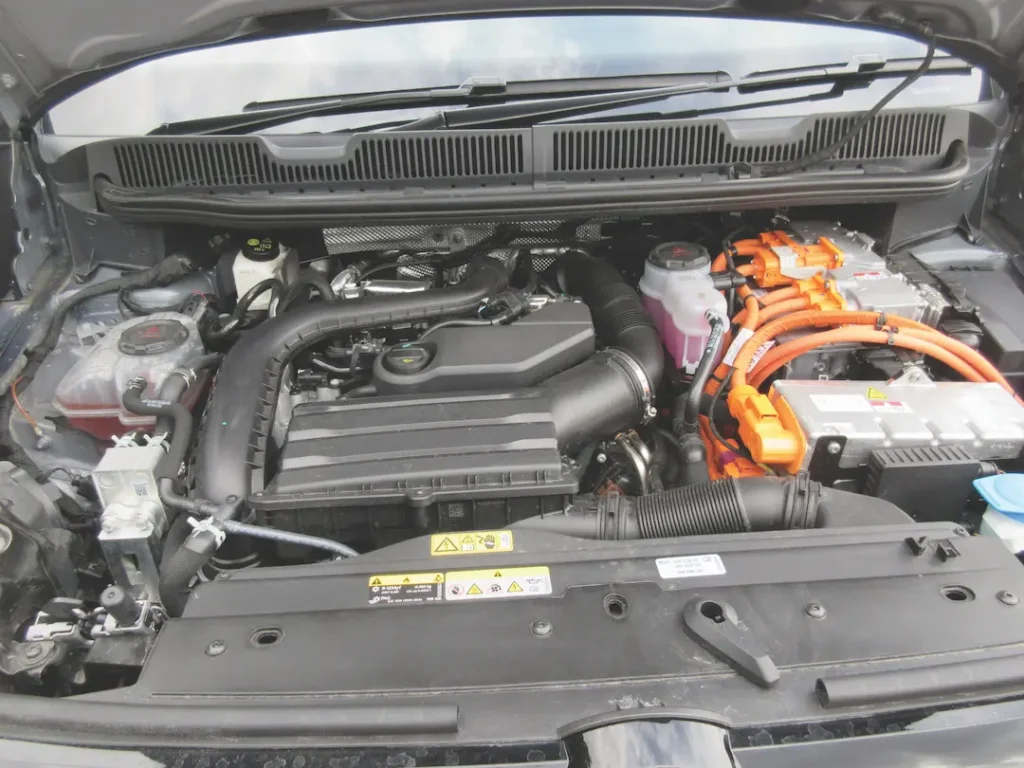
Powertrain
Equipped with a variable turbine geometry turbocharger and an intercooler, the four-cylinder in-line direct-injection engine delivers its maximum power across a 5,000–6,000rpm plateau. Top torque of 250Nm kicks in across a 1,500–3,000rpm plateau.
Driving
You’d think a plug-in hybrid with a petrol engine wouldn’t suffer unduly from in-cab noise, wouldn’t you? Well in this case, you’d be completely wrong.
When the engine is running it generates way too much racket, but at least it helps deaden the excessive wind noise and road roar which becomes prominent when the van switches to battery power.
It’s a pity because it spoils what is in other respects a remarkably pleasant van to drive.
The handling is impressive, with the Cargo eHybrid clinging on to the highway doggedly as we pushed it hard through some of Herefordshire’s and Gloucestershire’s twistier rural bends.
Nor did the ride disturb us unduly. The suspension coped well with all the potholes and ridges it encountered, no matter whether the van was laden or unladen.
Running just over half-laden for much of the time, we had no complaints about the performance. Our demonstrator accelerated strongly away from rest, and happily maintained the maximum legal motorway cruising speed when we took it down the M50.
It shifts from petrol to electric power and back again more smoothly than any hybrid we can recall encountering.
If you want to, you can switch from auto and change gear manually using paddles mounted behind the steering wheel. We can’t see why you’d want to bother, though.
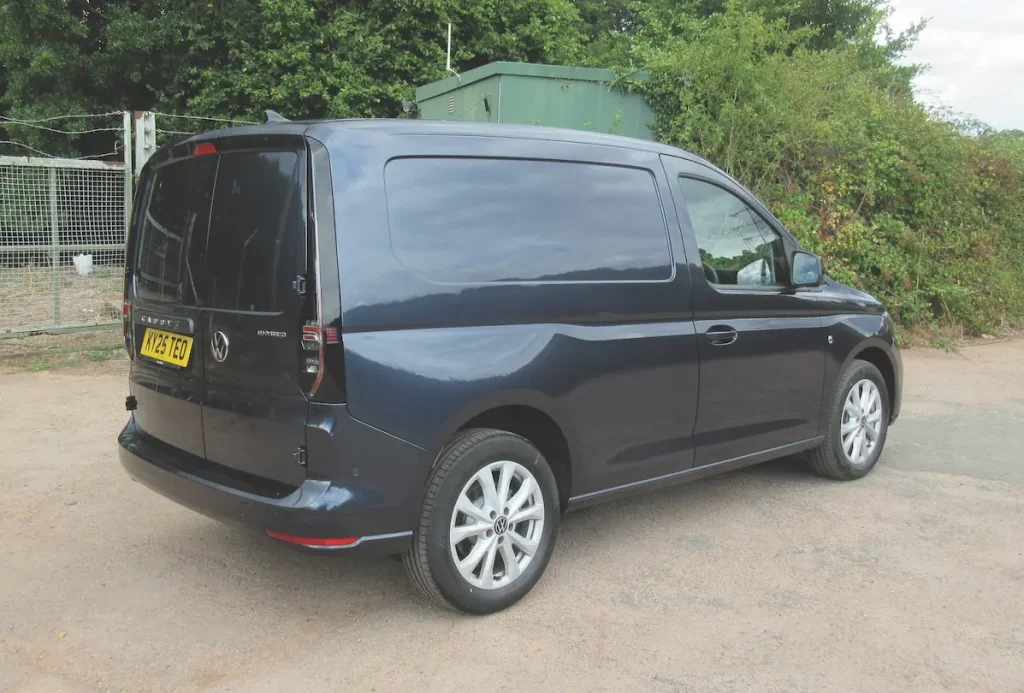
Operating
The quoted WLTP (Worldwide Harmonised Light Vehicle Test Procedure) fuel consumption figure of 565mpg and CO2 figure of just 11g/km sound hugely impressive, but should of course be taken with several very large bags of salt. They might be theoretically achievable if you hardly ever used the petrol engine, but in practice that won’t happen, and makes them woefully misleading.
We would suggest that the real-world figures are likely to be closer to 40mpg (which is roughly what we achieved) and 155g/km.
Volkswagen says that service intervals should be determined by usage. If you work in the construction industry then your van’s working life is going to be more arduous than it is likely to be if you are a suburban florist, the argument runs – and it’s a fair point.
We say that if you budget for a service every 12 months/12,500 miles with interim safety checks as and when required, then you probably won’t go far wrong.
The Cargo eHybrid is protected by a three-year/100,000 mile warranty which includes roadside assistance for the duration. Present, too, is a three-year paint warranty plus a 12-year body warranty.
No side rubbing strips are provided to protect the paint, and there is no spare wheel. You get an inflator/sealer instead.
| Model | Volkswagen Caddy Cargo C20 Commerce Pro SWB 1.5 TSI eHybrid |
| Price (ex VAT) | £30,405 |
| Price range (ex VAT) | £23,185–£31,835 |
| Gross payload | 635kg |
| Load length | 1,797mm |
| Load width (min/max) | 1,230mm/1,614mm |
| Load bay height | 1,272mm |
| Load volume | 3.1m3 |
| Loading height | 586mm |
| Rear door aperture | 1,234mm x 1,122mm |
| Side door aperture | 703mm x 1,096mm |
| Gross vehicle weight | 2,400kg |
| Braked trailer towing weight | 1,500kg |
| Engine size/power | 1,498cc, 150hp at 5,000–6,000rpm |
| Torque | 250Nm at 1,500–3,000rpm |
| Gearbox | Six-speed |
| Fuel economy (combined WLTP) | 565mpg |
| Fuel tank | 50 litres |
| CO2 | 11g/km |
| Warranty | 3yrs/100,000 miles |
| Service intervals | 1yr/12,500 miles |
| Insurance group | TBA |
| Price as tested | £31,485 |
| Options | Metallic paint (£560) Assistance Package Plus (£520) |
Rivals
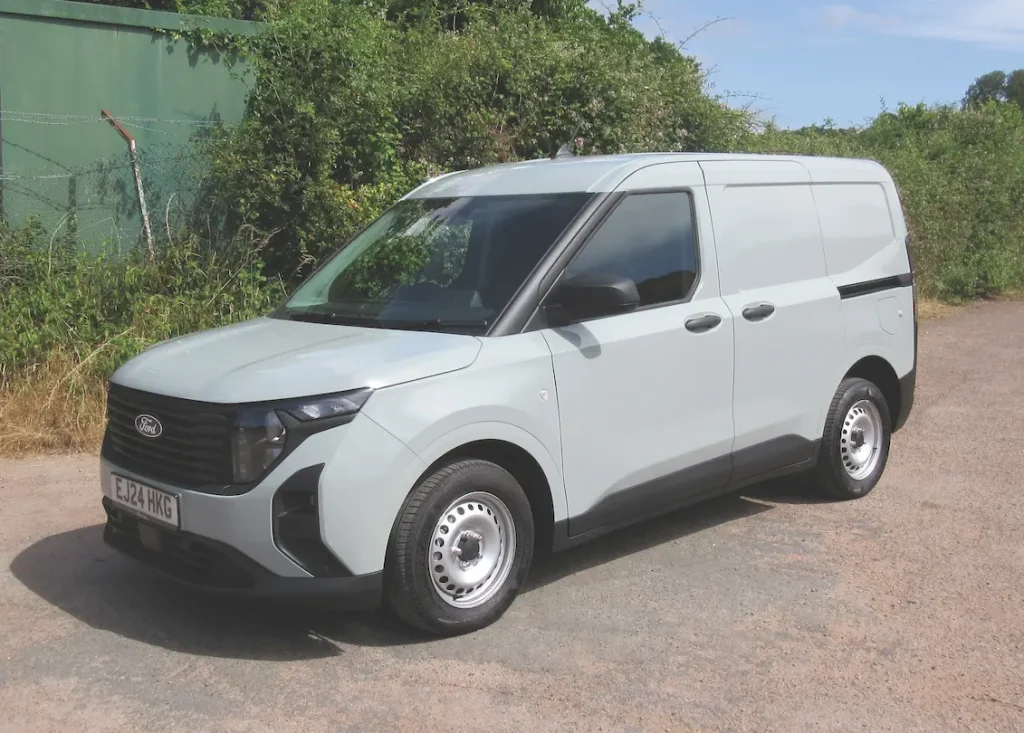
Ford Transit Courier
On the face of it, it is a little odd that Ford has chosen to introduce a model that is so close to the Transit Connect, but there are marked differences between the two. A key one is that the Courier is up for grabs in battery-electric guise and the Connect isn’t, although you can order it as a plug-in-hybrid, albeit with a more powerful petrol engine. Winner of the What Van? Compact Van of the Year Award for 2025, the Courier is a competent package with top marks for onboard safety. However its diesel engine lacks punch.
| Price range (ex VAT) | £17,700-£28,000 |
| Load volume | 2.9m3 |
| Gross payload | 613-849kg |
| Engines | 100hp 1.5 diesel, 100hp, 125hp 1.0 petrol, 136hp/100kW electric |
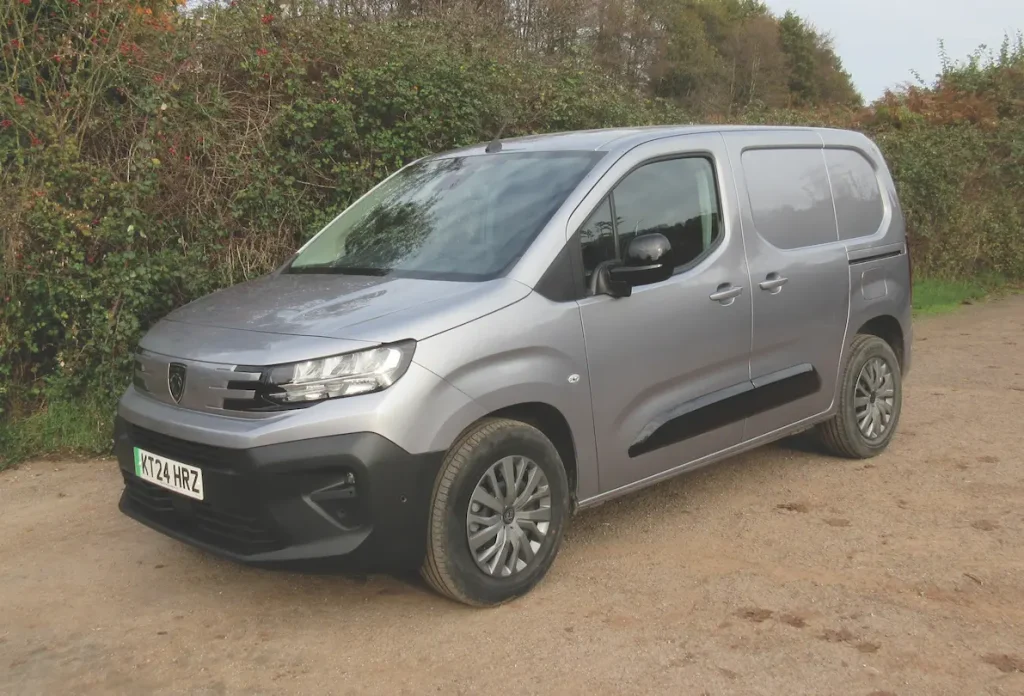
Peugeot Partner
Britain’s best-selling compact van last year, the Partner is a good all-rounder that is unlikely to disappoint. Bear in mind that Peugeot is a member of the vast Stellantis automotive group. All of these brands have an equivalent model to the Partner (Berlingo, Doblo and Combo respectively) based on the same platform, and all four vehicles were upgraded and re-styled a couple of years ago. The same van is sold as the Proace City by Toyota thanks to a joint-venture deal between Stellantis and the Japanese giant.
| Price range (ex VAT) | £22,645–£31,005 |
| Load volume | 3.3–3.9m3 |
| Gross payload | 669–982kg |
| Engines | 100hp, 130hp 1.5 diesel, 136hp/100kW electric |
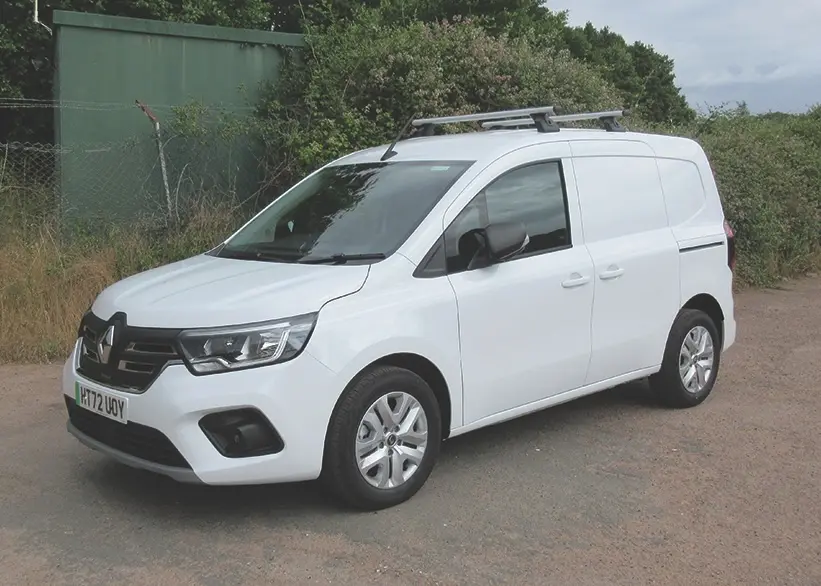
Renault Kangoo/Kangoo E-Tech
The Kangoo/Kangoo E-Tech underwent a revamp a couple of years or so ago, with a new front grille incorporating Renault’s latest visual identity plus more equipment delivered as standard. Every derivative gets a reversing camera and an electric parking brake, among other goodies. There is no disputing the fact that both versions of the Kangoo are refined, practical and capable, although with a combined WLTP range of 186 miles, the Kangoo E-Tech can’t quite get over the 200-mile barrier surmounted by the e-Partner.
| Price range (ex VAT) | £20,750–£34,350 |
| Load volume | 3.3–4.2 m3 |
| Gross payload | 608–975kg |
| Engines | 100hp 1.3 petrol, 95hp, 115hp 1.5 diesel, 120hp/90kW electric |
The Final Verdict
| Design | 9/10 | Clever package which represents a viable halfway house between diesel and going full-blown battery-electric. |
| Cabin | 7/10 | Comfortable and well-equipped, but we’d like to see more traditional switches and less reliance on the touchscreen. Loathe those sliding heater and radio volume controls. |
| Ride | 8/10 | Suspension copes well with the worst that Britain’s appalling highway surfaces can throw at it no matter whether the van is laden or unladen. |
| Refinement | 5/10 | In-cab noise levels are way too high, and VW needs to address this problem sharpish. |
| Load area | 7/10 | Easy to access and sufficient tie-down points, but it needs timbering out, payload capacity is low and we’re not entirely convinced by the plastic bulkhead. |
| Handling/performance | 9/10 | Both are exemplary, with strong acceleration complemented by good road-holding. Difficult to fault. |
| Motor/transmission | 8/10 | Well-matched, with the DSG transmission delivering power smoothly and without fuss. |
| Standard equipment | 8/10 | Got pretty much everything you are likely to need, and we can only applaud the strong stress on onboard safety systems. |
| Operating costs | 7/10 | Comprehensive warranty package wins top marks, but the quoted fuel economy figure should be taken with a very big bag of salt. |
| What Van? subjective rating | 8/10 | A sensible choice for businesses that want to reduce their environmental impact, but are still understandably wary of electric vans. |
| Overall rating | 76/100 |


